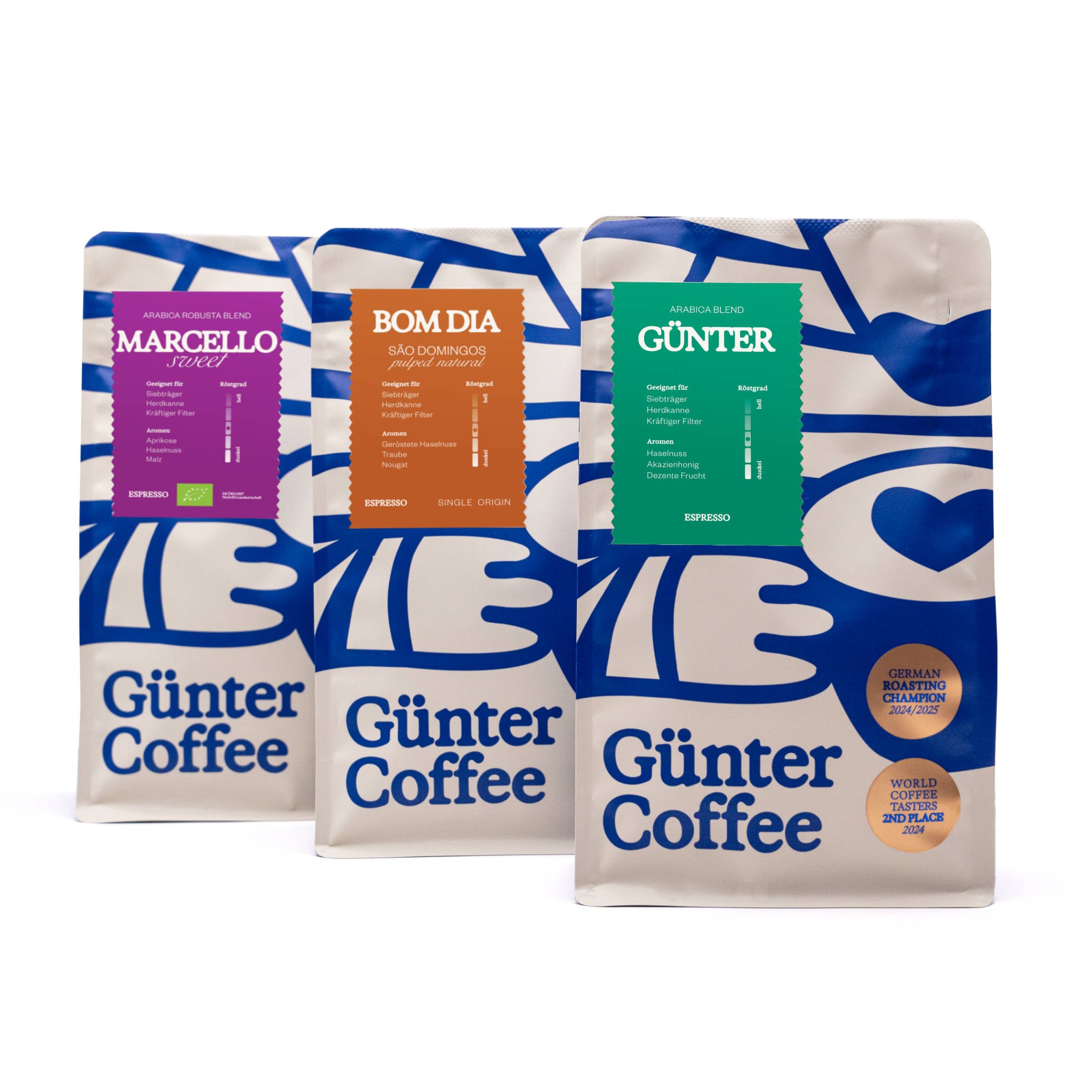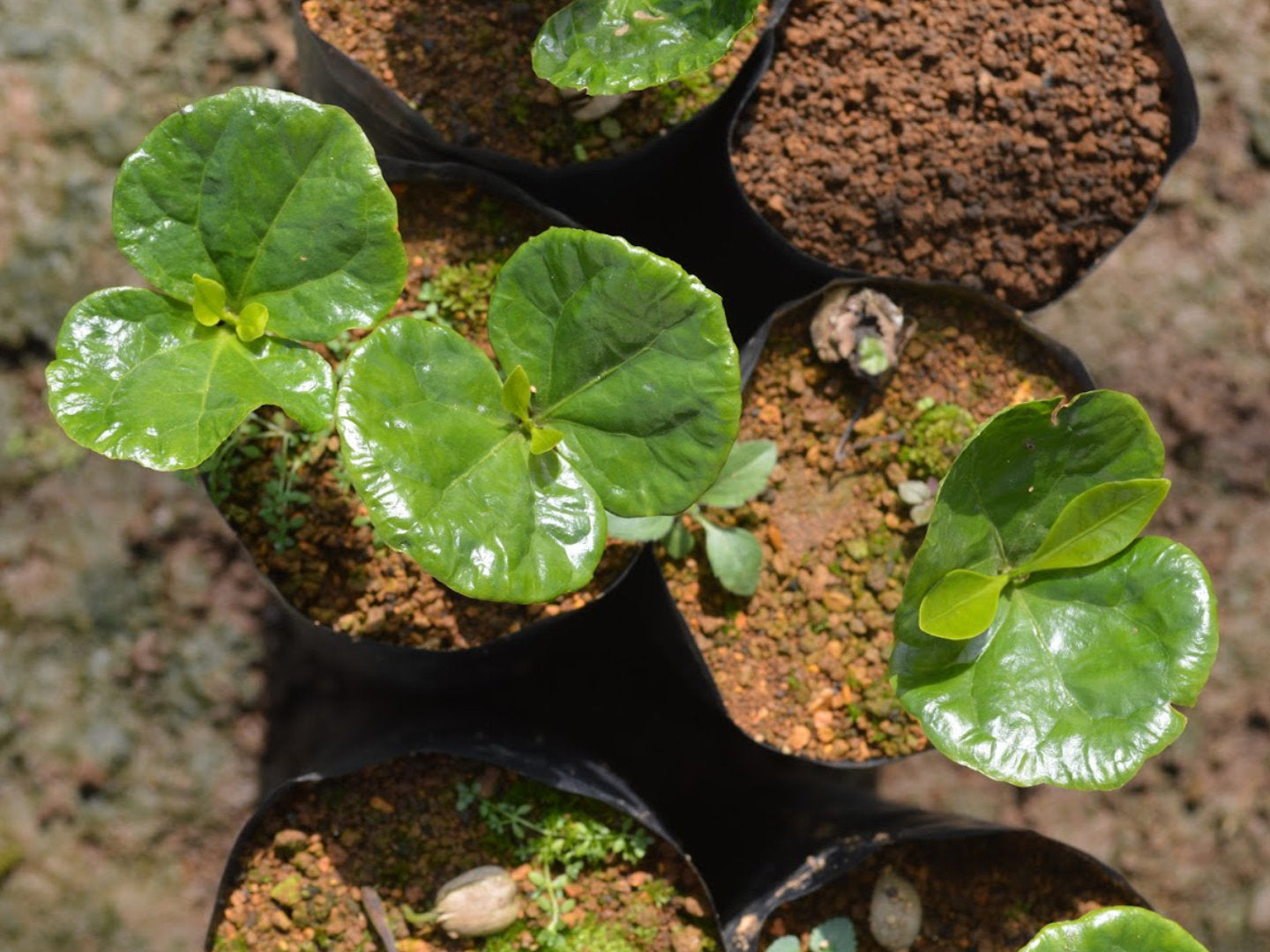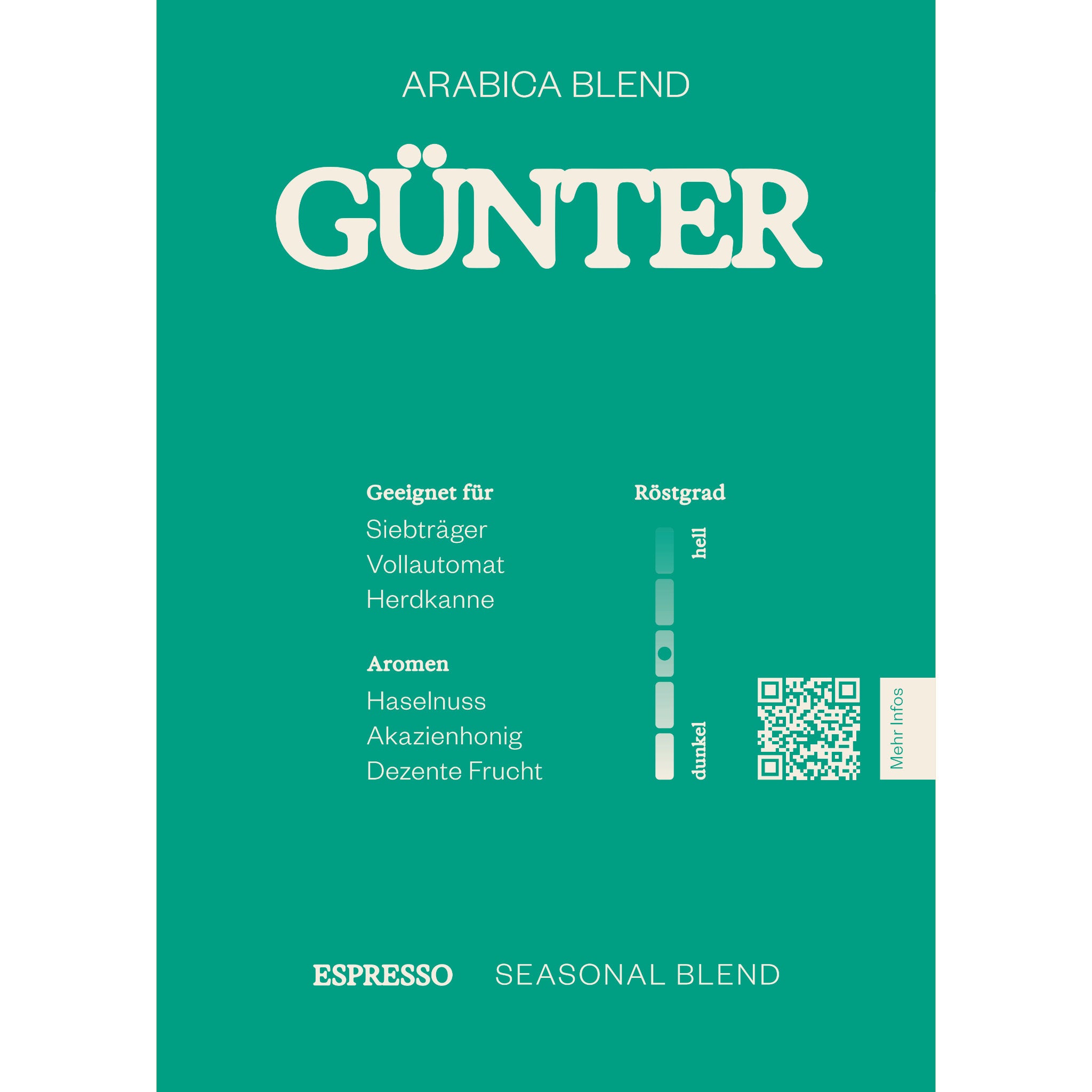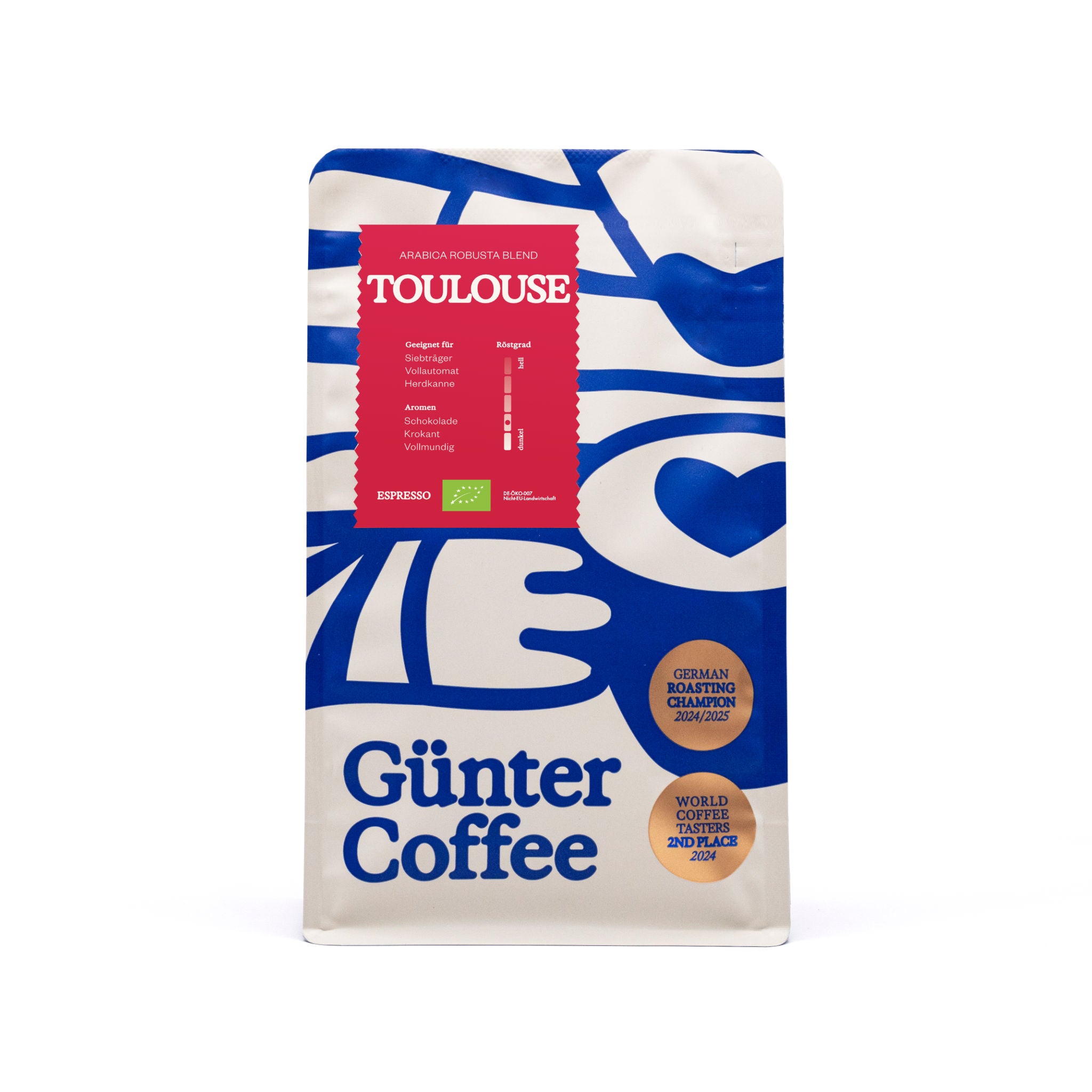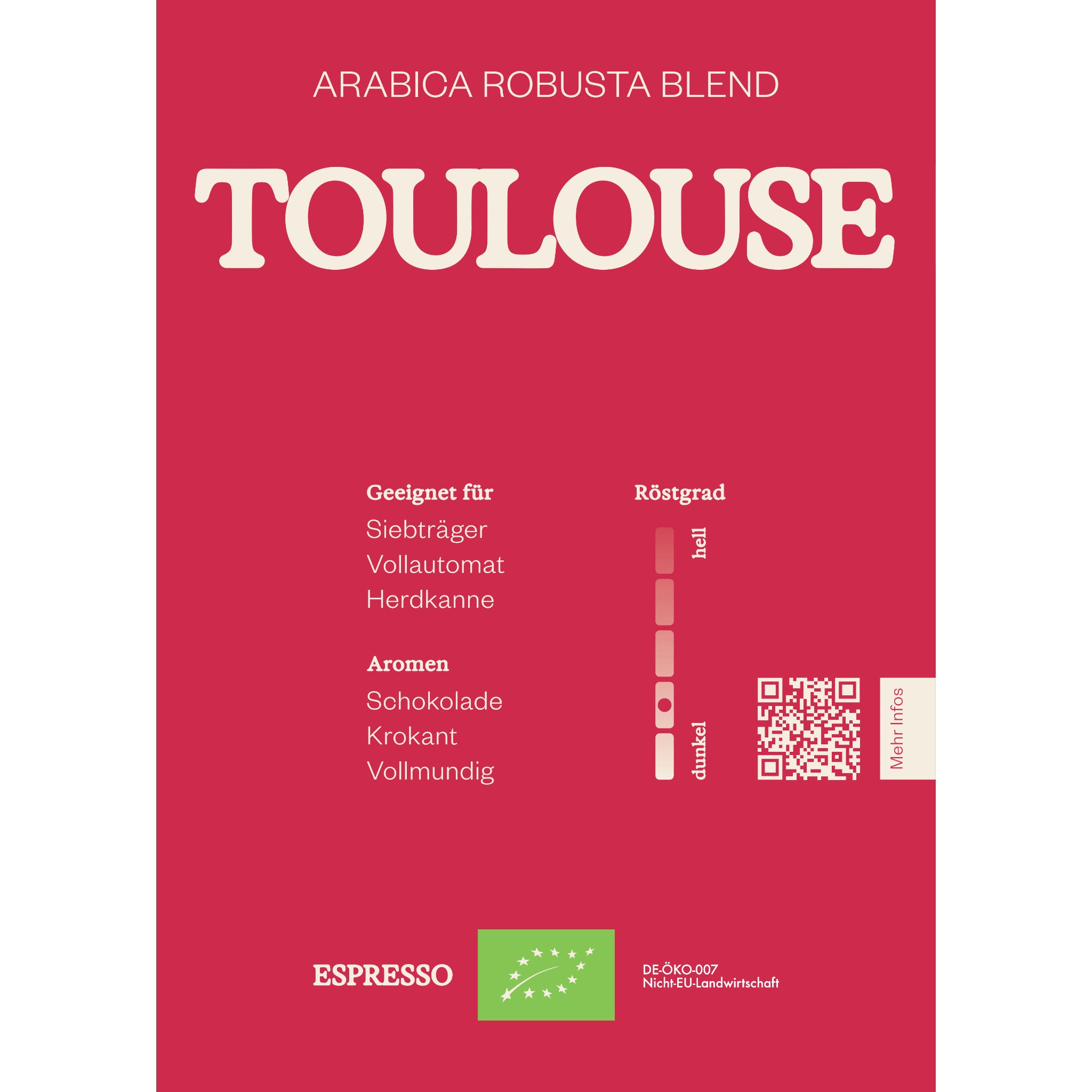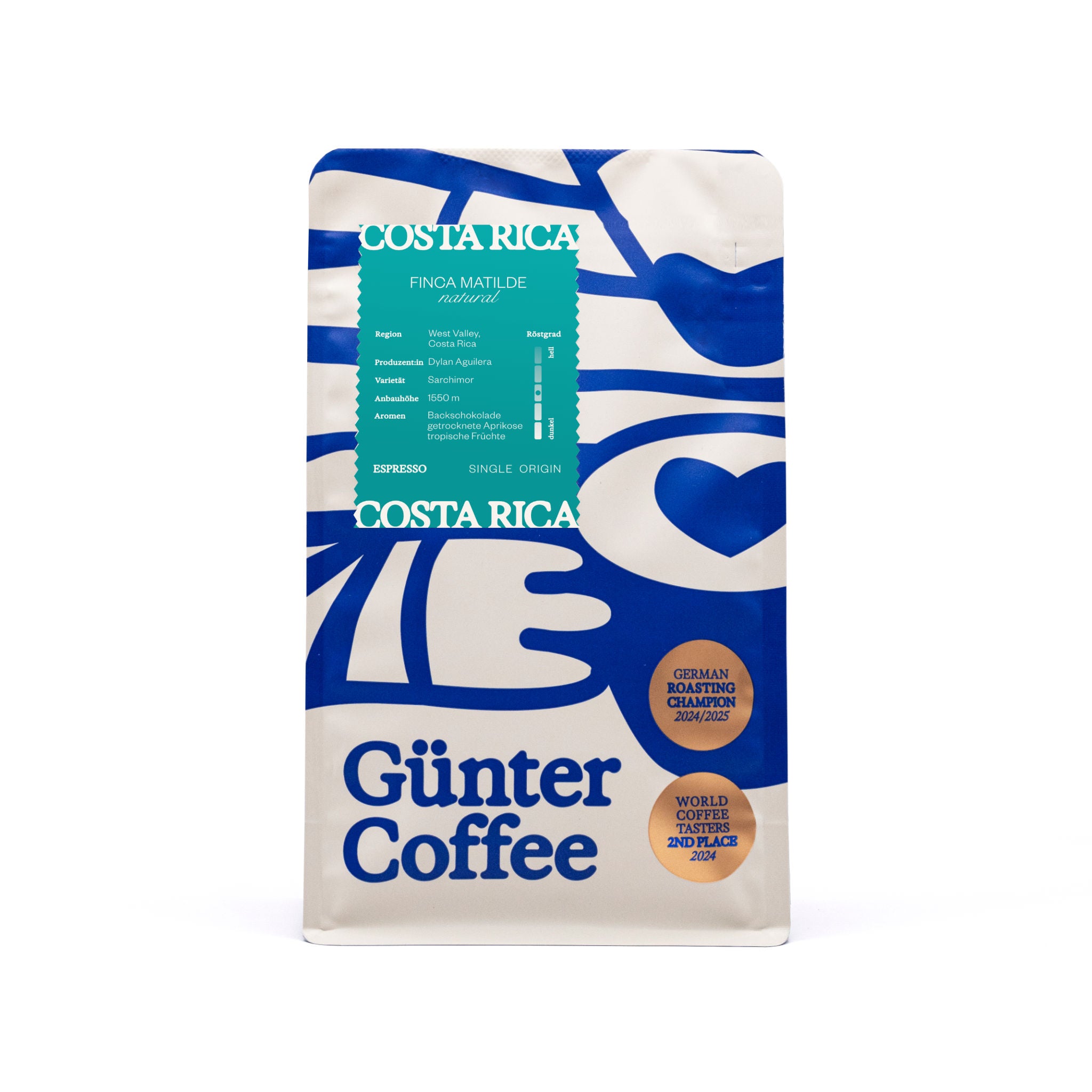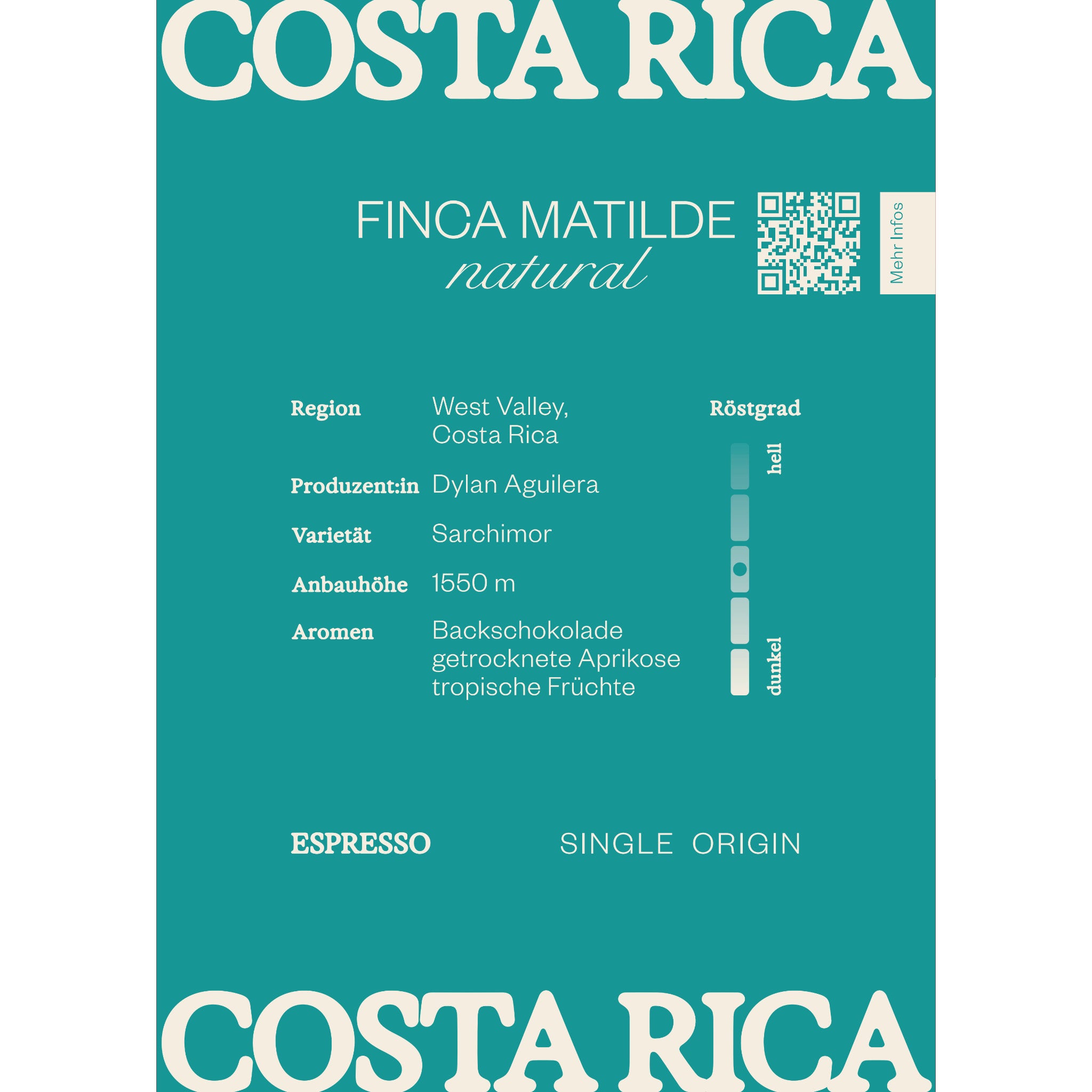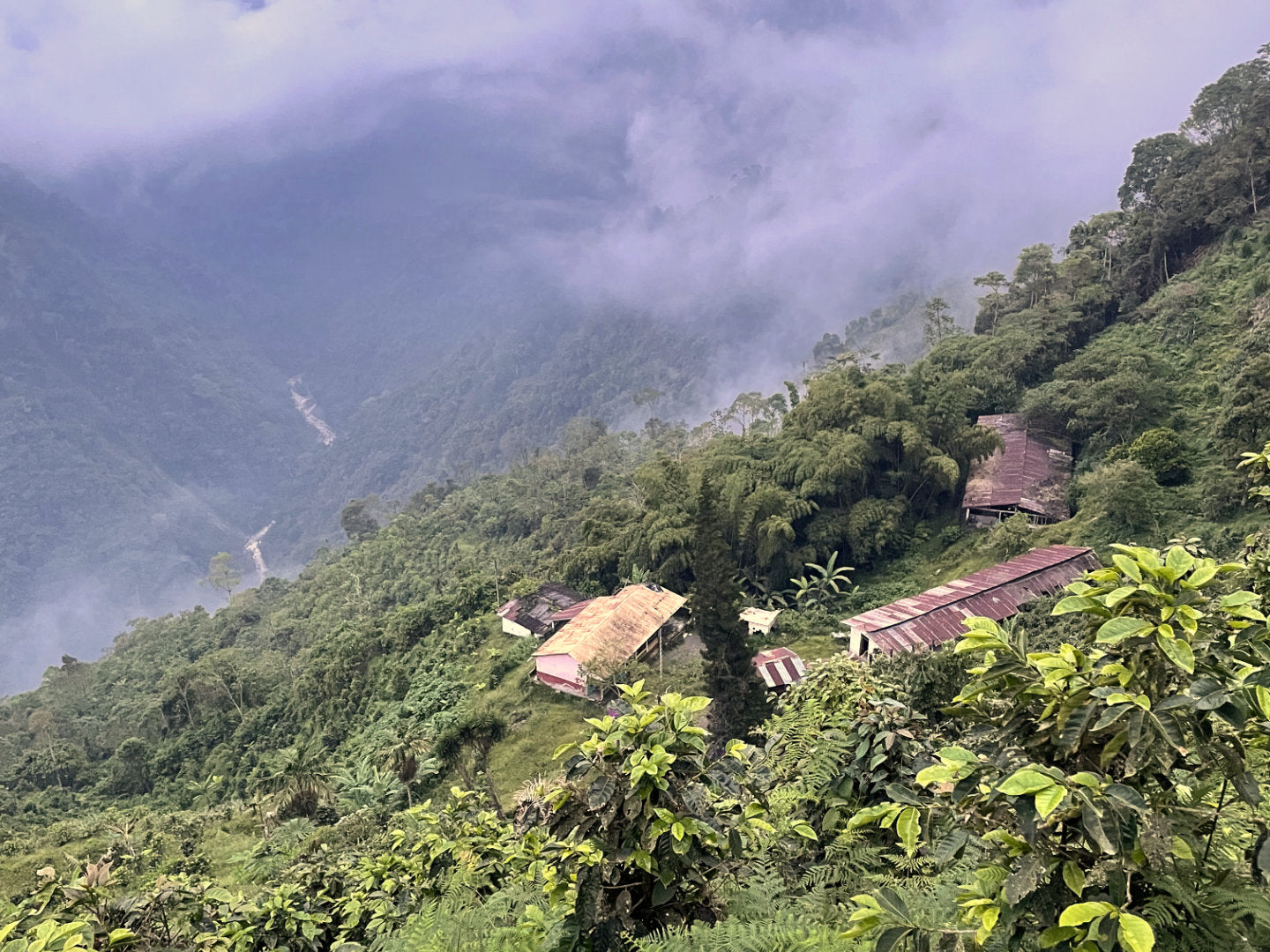Plants continue to evolve, with and without direct human influence. Coffea, the species of coffee plants, also adapts to its environment through natural selection. As a crop plant it enjoys particular attention. Thousands of scientists are constantly investigating the question of how the plant can be artificially optimized. For more fruit yield, higher resistance to pests and diseases, better weather resistance, lower nutrient requirements, in short: for the most efficient coffee cultivation possible.
This inevitably leads to the focus being on a few species and varieties of the Coffea plant. Of over 120 known species, three are mainly grown. Coffea arabica is the most widespread worldwide with a share of around 60%, followed by Coffea canephora with around 40%. The latter is better known as Robusta. Coffea liberica is currently fighting for a position in the specialty coffee scene.
No. Many coffee lovers think that the designation “100% Arabica” represents a special quality feature. This is not the case.
It is true that Arabica varieties have more natural aromas. But with heavily roasted coffee (often referred to as 'Italian') this hardly matters. Long roasting times ensure that the roast aromas overpower all other aromas. Robusta offers more caffeine and is popular in espresso blends because of its more pronounced crema. However, there are also strong differences in quality with Robusta.
With the emergence of specialty coffee and the associated focus on high-quality coffee beans, species and varieties with relatively low yields but an interesting taste profile are increasingly coming into the spotlight. The Arabica variety Geisha is currently the most prominent representative of this development. However, looking at the entire coffee market, the cultivation quantities are still very manageable.
Arabica varieties Bourbon and Typica
Various forms of Bourbon and Typica varieties are most commonly grown. These originally come from Ethiopia, but were brought to Yemen and spread worldwide by the colonial powers. Commercial coffee cultivation started with them. There are now numerous natural mutations and breedings of the two varieties, as they are both very susceptible to common coffee diseases. In Brazil, the country with the world's largest coffee production, 97.55% of the coffee plants come from Bourbon and Typica, according to the organization World Coffee Research.
Coffea arabica var. bourbon is known for its very good flavor potential, is tall and produces average-sized coffee beans. It was mainly cultivated on the island of Reunion in the 19th century. The name Bourbon comes from the noble family of the same name, to which King Louis XIII belonged. He ruled France from 1610 to 1643. At that time and into the 19th century, French settlers forced their slaves on the island to grow vanilla, sugar cane and coffee.
The well-known name of Bourbon vanilla also comes from this time, when the island was the main exporter of spiced vanilla. With the French February Revolution of 1848, slavery was officially abolished on the island. However, sugar, coffee and vanilla continued to be cultivated and exported. Today, coffee cultivation no longer plays a role on the island. The Bourbon variety coffee beans are part of our Günter, Bom Dia, Marcello Sweet, Toulouse and Decaf coffee beans but are now grown elsewhere.

Here you can see part of the variety garden on the Capilla del Rosario farm, which Philip visited in Colombia in 2023.
Coffea arabica var. typica is also known for its very good flavor potential, is tall and produces large coffee beans. It probably originally comes from the previously described Bourbon variety. Due to the very different distribution routes, a whole new strand of mutations and breeding has developed from Typica. The Dutch brought the seeds we usually call beans to Indonesia, but had little luck with cultivation due to natural disasters. So they brought a plant to the Amsterdam Botanical Garden.
From there, the seeds were brought to Central and South America during the 18th century, where they were cultivated until the 1940s. Cultivation also began in Africa at the beginning of the 20th century. The variety was gradually replaced by Bourbon and other varieties because it is extremely susceptible to various coffee diseases. The coffee beans of the Typica variety are part of our coffee beans Günter, Bom Dia, Marcello Sweet,Decaf and Peru Lima Organic.
Diseases of coffee plants
The most commonly cited diseases of coffee plants are coffee leaf rust, cherry disease and nematodes. If they spread, they cause severe crop losses or even complete crop losses and can kill coffee plants.
Coffee leaf rust
Coffee rust is a fungus that causes the disease of the same name in Arabica plants and, in the worst case, can lead to complete harvest failure. Because of the serious economic consequences, a separate research center was founded in Portugal in the 1970s, the Coffee Rust Research Center. The aim here was to find resistant varieties. There are also corresponding research efforts in Colombia. In Central America, coffee rust affected crops on 600,000 hectares of farmland in 2012. As a result, 300,000 coffee farmers had to replant their coffee.
Coffee cherry disease
Coffee cherry disease, better known as Coffee Berry Disease (CBD), is also a disease caused by a fungus. Like coffee rust, it predominantly affects coffee plants of the Arabica variety, but is much less widespread and mainly affects plants in African growing regions. CBD can also cause complete harvest failure under certain circumstances.
Roundworms in coffee
Roundworms are everywhere: more than 20,000 species have been described so far, and estimates for species that have not yet been described range from 100,000 to 10 million. Some of them are parasitic and attack plants, animals and people. The coffee plant is also plagued by various species of nematodes. They play a role in all coffee growing regions.
Varieties of Bourbon and Typica
Variety Caturra
Caturra is short in stature and is a natural mutation of the Bourbon variety. The name Caturra comes from the Guaraní language and means “small”. It is spoken in parts of Paraguay, Bolivia, Argentina and Brazil. The variety was discovered in Brazil at the beginning of the 20th century and has been popular ever since because of its small space requirement and dense branch structure. The plant produces average sized coffee beans and is known to have good flavor potential when grown at 1000-1600 meters altitude. The ideal height varies depending on latitude. The coffee beans of the Caturra variety are part of our coffees Günter, Bom Dia, Marcello Sweet and Peru Lima Organic. Like Bourbon, Caturra is susceptible to coffee rust, cherry disease and roundworms.
Variety Catuai
Catuai is also short in stature and is a cross between Caturra and Mundo Novo. The characteristics of the variety are similar to those of Caturra. However, the plant is slightly larger and more stable. The plant produces average-sized coffee beans and is known to have good flavor potential at a cultivation altitude of 1000-1600 meters. Catuai is part of our coffees Günter, Bom Dia, Toulouse and Marcello Strong. The ripe cherries can be yellow or red, depending on the exact variety.
Variety Mundo Novo
Large-bodied, Mundo Novo is a natural cross between Bourbon and Typica, discovered in the Brazilian state of Sao Paulo in the 1940s. The variety was distributed to farmers by the Instituto Agronómico de Campinas (IAC) in Brazil and produces average-sized coffee beans. Mundo Novo can be found in our Toulouse and Peru Lima Organic roasted coffees.
Variety Pache
Pache is a short-statured variety and emerged as a natural mutation from the Typica variety. It was first discovered in Guatemala in 1949. The plant produces large coffee beans and is known to have good flavor potential if grown high enough, i.e. from 1000-1600 meters, depending on latitude. Pache is part of our Toulouse and Peru Lima Organic coffees.
Variety Villa Sarchi
Villa Sarchi is a small variety and is the result of a natural mutation of the Bourbon variety. It was discovered in Costa Rica between 1950 and 1970. Villa Sarchi produces small coffee beans and has good flavor potential when grown at altitudes from 1000 meters upwards. The plant gained fame primarily through crossing with the Timor Hybrid variety, from which the Sarchimor group emerged. We will go into these in more detail below.
Varieties of the SL family
Other varieties that can be found in our coffees include SL28, SL14 and SL34. Behind the seemingly technical names are Bourbon and Typica varieties with a very good to exceptional taste profile. The plants are mainly grown in the African countries of Kenya and Uganda and are sometimes very drought-resistant. SL14 and SL28 are part of our Uganda Mount Elgon coffee roast, which will go on sale soon.
Ethiopian Heirloom
A heirloom/landrace is a plant variety that has adapted very well to the environmental conditions offered to it over many years. In the coffee context, most landraces are found in the forests of Ethiopia, the country of origin of the coffee plant. The Arabica varieties from the country are generally characterized by a very high taste quality and lower yields. At the same time, they are more tolerant to disease than many other Arabicas, such as the widespread varieties Bourbon and Typica.
Variety Geisha
Geisha (also called Gesha) is probably the most prominent variety of Ethiopian landraces. The plant is large, has a relatively low yield, but outstanding flavor potential with average bean size. It plays a particularly important role in the specialty coffee scene and was rediscovered in Panama in the early 2000s.
Java variety
Java is another Arabica variety that is attributed to the Ethiopian landraces. It is large, produces large beans and has very good flavor potential. It also has an increased tolerance to coffee rust and coffee cherry disease. The variety got its name because it was brought from Ethiopia to the island of Java by Dutch invaders. Like Geisha, it is mainly grown in Panama today.
Introgressive varieties
Introgression is the mixing of genetic material from one species or subspecies with another in the same population. On the one hand, this happens naturally and randomly in the wild, but it is also often caused artificially, especially in agriculture. With artificial introgression, one or more characteristics of a plant are specifically exchanged, for example in order to breed a particularly efficient, resistant and/or high-quality plant. In the coffee sector, a distinction is mainly made between two introgressive groups: Catimor and Sarchimor.
Catimor and Sarchimor varieties
Artificial introgression in coffee plants gained momentum when the Timor Hybrid variety was discovered around 1920. On the island of East Timor, the genome of a Robusta coffee plant had naturally mixed with that of an Arabica plant. The result was the coffee variety called Timor Hybrid, which is resistant to coffee rust. Since the fungal disease caused serious problems then and now, breeders quickly set about further researching the Timor Hybrid. They crossed it with various small-growing Arabica varieties.
They had the best success with the bourbon-based varieties Caturra and Villa Sarchi. This is where the Catimor (Caturra x Timor) and Sarchimor (Sarchi x Timor) groups get their names. Since the Timor Hybrid variety already contains Arabica genetic material, this is also referred to as a backcross.
Catimor 192 is one of these varieties. It was bred to be small, produces a lot of large beans and has good flavor potential. In addition, it is resistant to both coffee leaf rust and CBD. The variety was artificially produced by crossing the Caturra and Timor Hybrid 1343 varieties.
Since introgression is usually about generating the greatest possible yield in as little space as possible, many of the introgressive Catimor and Sarchimor varieties are not particularly high in quality. It's about high yields with as little effort as possible, i.e. lots of cherries and disease-resistant plants. The specialty coffee market accounts for approximately 15% of the overall coffee market. The remaining 85% is often primarily about mass.
This also explains why industrial coffee is usually roasted very dark, in order to achieve a certain taste, especially through roasted aromas, that the plant does not naturally produce. Nevertheless, there are also differences in quality between the Catimor and Sarchimor varieties. This is also because the market for specialty coffee is growing rapidly, and with it the need for new, exciting varieties.
F1 hybrid coffee varieties
Hybrids are generally the seeds that result from crossing two genetically different plant species, e.g. genetically different Coffea plants. With these relatively new varieties the aim is to combine characteristics and properties of the two original plants. As with introgression, the goals here are high taste quality, more yield and better disease resistance. In fact, F1 hybrids can also be created via introgression, but this is not a must.
F1 hybrids are characterized by the fact that they usually have a significantly higher yield than non-hybrids. The addition “F1” means that this is the first offspring of the cross. The F stands for the Latin words filius or filia, which means son or daughter in English. The number 1 represents the first generation that resulted from the cross. The seeds of the F1 hybrid would in turn produce the F2 hybrid, etc. However, since the second generation is not stable with regard to the desired, bred characteristics of the first generation, sowing it is not desirable. In botany we also speak of seed-proof and non-seed-proof, hybridized seeds.
F1 hybrids exist for all possible plant species. For example, F1 seeds for beans and tomatoes can be found in hardware stores. And there is always criticism of the same. Because the plump, colorful vegetables on the packaging only come from exactly these seeds. If you want to use the seeds of your adult plants for a new sowing, you will suddenly end up with completely different, smaller or even different colored fruits. The same goes for seeds that we fish from fruits or vegetables in the supermarket. Since these are mostly fruits from F1 hybrid seeds, nothing useful usually grows from the seeds of the fruits.
Most coffee plants that can be attributed to the F1 hybrids are short in stature. They have very good flavor potential, a high yield and produce larger than average beans. The best-known varieties include Centroamericano, Evaluna, Milenio, Mundo Maya and Ruiru 11.
Are there genetically modified coffee plants?
There are currently no genetically modified coffee plants. While this article's discussion of coffee plant varieties may seem counterintuitive, methods of introgression and hybridization have played a role in agriculture for many decades. In addition, genetic manipulation is largely banned in many countries around the world, as well as throughout the EU. There are only exceptions for research, but the products are usually not allowed to be imported into the EU for consumption.
According to the Federal Information Center for Agriculture, corn is currently the only plant that can be grown in a genetically modified form in the EU. Furthermore, you can read on the linked page that “around 64 import approvals have currently been granted”. And further: “Around 60 genetically modified plants are on the waiting list for approval in the EU, including various varieties of corn, rapeseed, cotton, flowers, soybeans and rice.”
Plant breeding in coffee-growing countries
Almost every coffee-growing country has its own institute and one or more nurseries that breed certain varieties and sell them to farmers. The national institutes are conducting research into resistant seeds and those that are ideally adapted to the country's climatic and geological conditions. What grows well in Ethiopia may die off fast in Peru. That's why it makes sense for each country to cook its own soup instead of relying on a common institute.
But that does not mean that there is no cross-national research. Large corporations obviously also have an interest in breeding coffee plants that are as efficient as possible. For example, they join forces in the organization World Coffee Research. Coffee also plays a special role at some universities. For Europe, the Zurich University of Applied Sciences, or ZHAW for short, should be mentioned in this context. Here, Prof. Dr. Chahan Yeretzian leads the so-called Coffee Excellence Center.
More information about coffee varieties
If you would like to find out more about the types and varieties of the coffee plant, there is a place that is particularly suitable for this. The organization World Coffee Research, which has already been mentioned several times in the article, maintains a variety catalog with information on many common coffee varieties. Anyone who speaks English can find out more about, among other things, quality potential, optimal cultivation height, disease resistance, growth size, yield and the availability of different varieties of the coffee plant.
